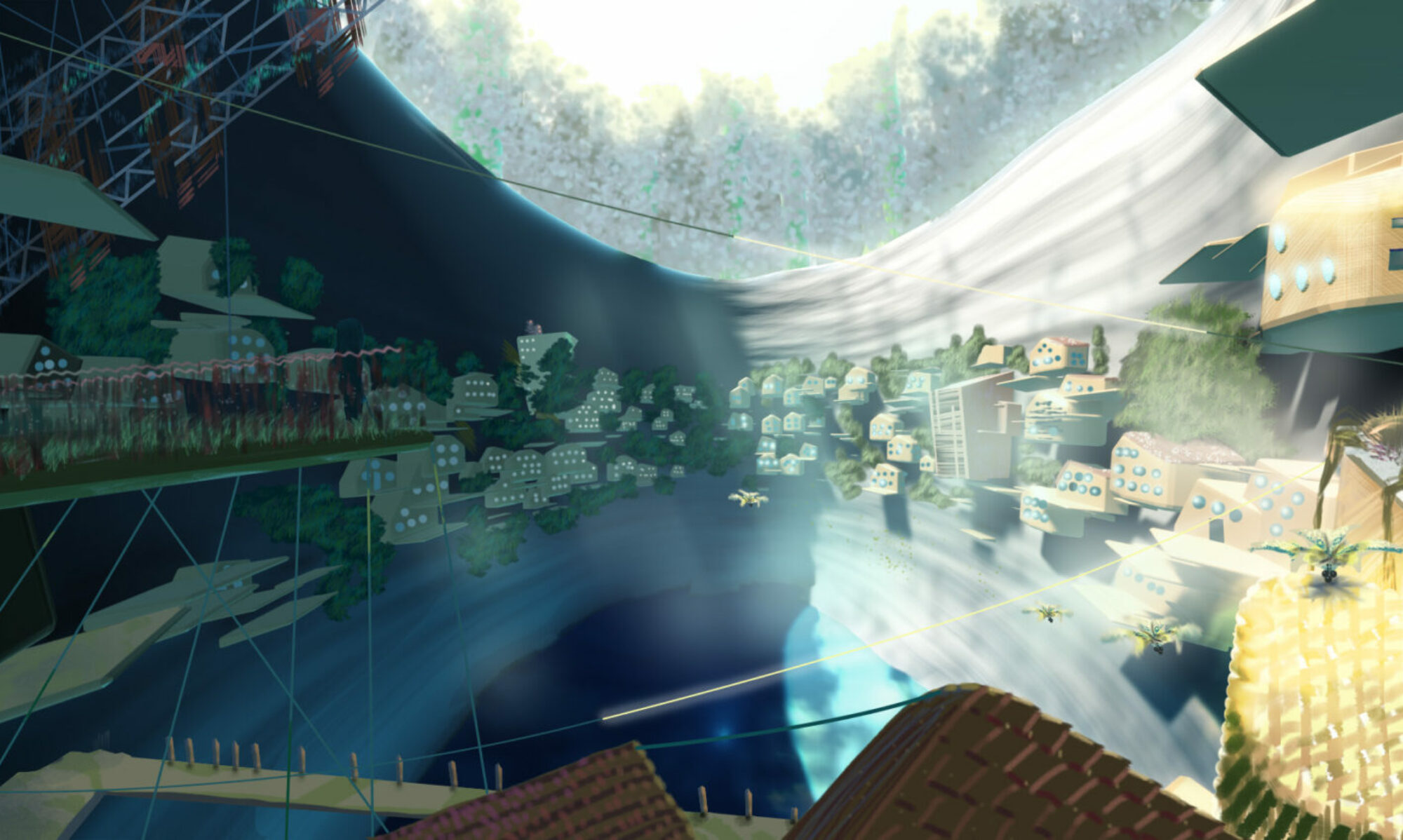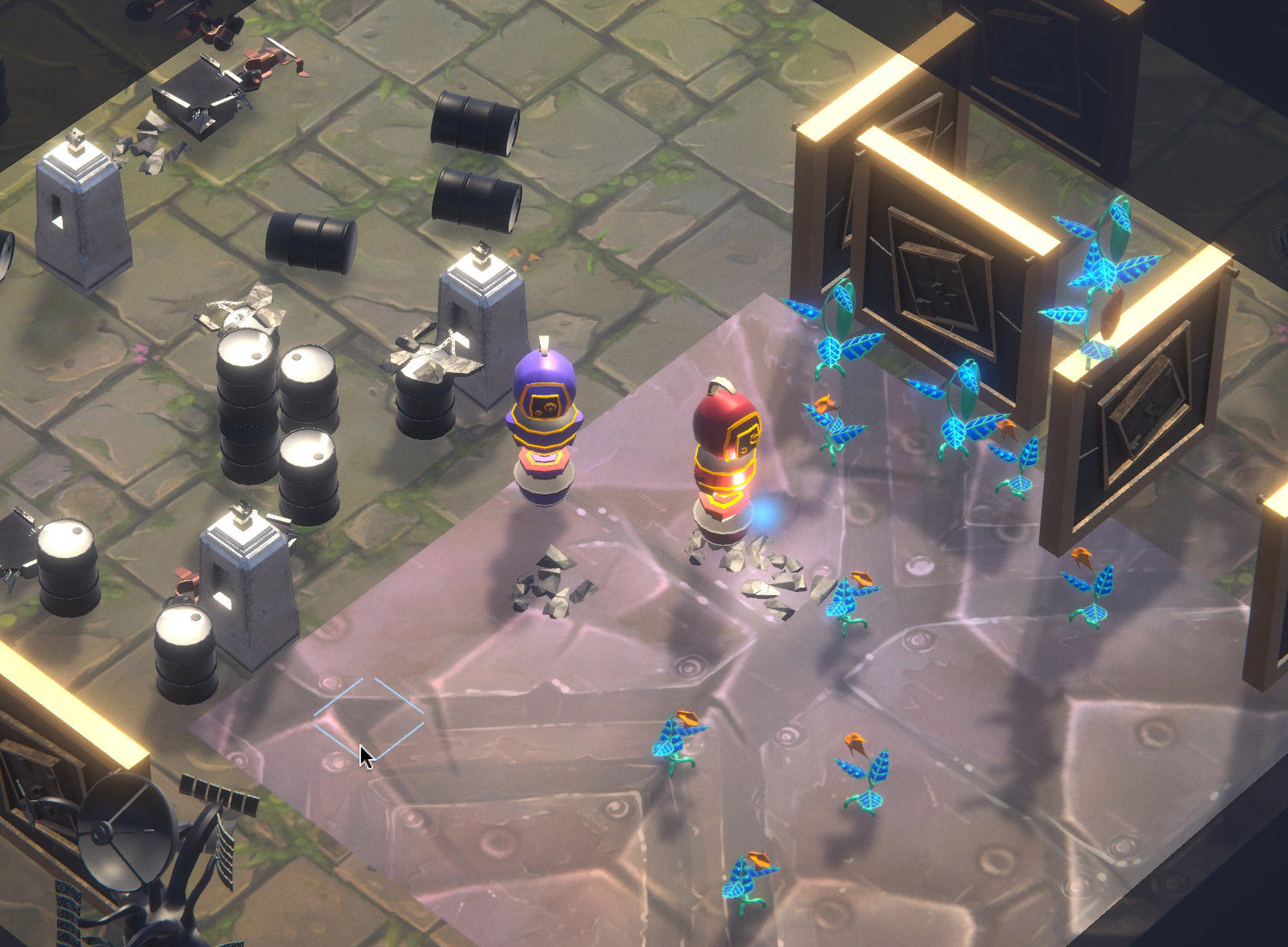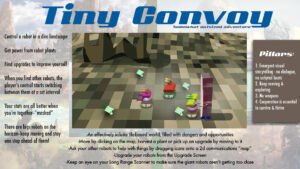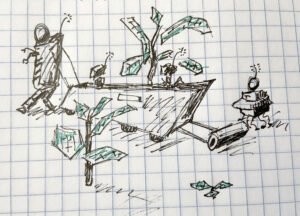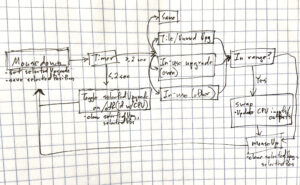“Tiny Convoy” is as a demo-length convoy simulator–a moving base builder–developed in Unity 2019 by Niek Meffert, Lucas Oliveira and myself. Playable betas for Mac and Windows can be downloaded here. The goal is to survive as a group of tiny robots in a big dangerous world: find power, upgrade your bots, and avoid dangers.
Remember the annoying escort missions in “Warcraft III,” where your soldiers kept hauling off to attack anything that moved, instead of protecting the things they were supposed to? It’s like that. Except your bots can’t attack anything. You are essentially robot herbivores. Looked at another way, “Tiny Convoy” is a herd simulator.
As a small team in our first year Masters, the work was loosly siloed. Oliveira took the lead on modelling and texturing, Meffert was point on UI and the first version of the A* pathfinder, and the C# code base is about 90% mine. (I also designed the Touch-Me-Not exploding plant.)
1. Emergent visual storytelling–
Design Pilarsno dialogue, no scripted beats
2. Keep moving & exploring
3. No weapons
4. Cooperation is essential to survive & thrive
Our goal was to marry emergence and progression in an interesting and satisfying way. We wanted to build a game in which the player could create in their own mind an emergent storyline around an algorithmically-generated world. If the content one encountered became too boring and undifferentiated, there would be no sense of progression, and little incentive to keep exploring. On the other hand, if too many things were deliberately laid in the player’s path at defined points, it would take on the feeling of an “on rails” story game, to the detriment of replayability.
Every “Civilization” player remembers when the Mongols took their capital, and they rallied back to win. What happened was only the randomized game content interacting with the rules and the player’s choices, but it took on the quality of a narrative moment because it was different and valued by the player. Likewise, we wished to create moments like “When Little Blue got stepped on,” and “When we found the field of Touch-Me-Nots on the other side of the desert”—moments created entirely by the game systems interacting with the player’s choices, but which would feel personally meaningful.
To do this, we needed to construct a series of game loops, with systems of player feedback. We would gradually challenge the player by introducing limits on stock (not enough power available) and new sinks (dangers that damage parts). The game engine would introduce new content and changes to the starting conditions in a measured manner as the player moved farther and farther across the game world.
